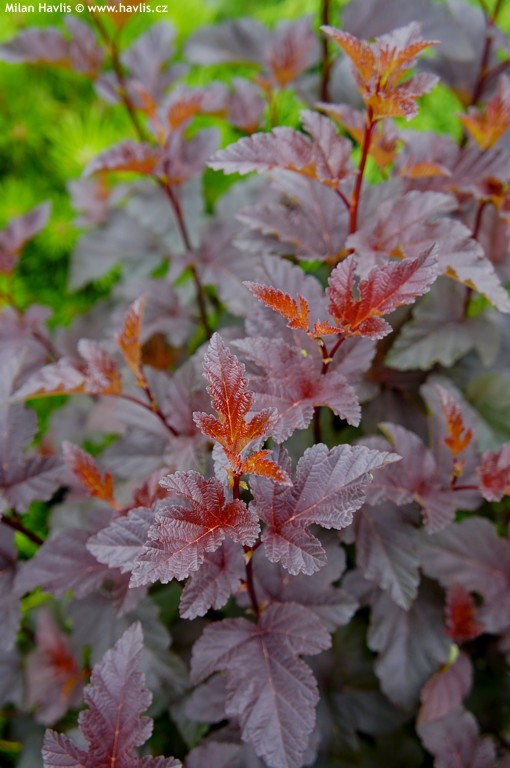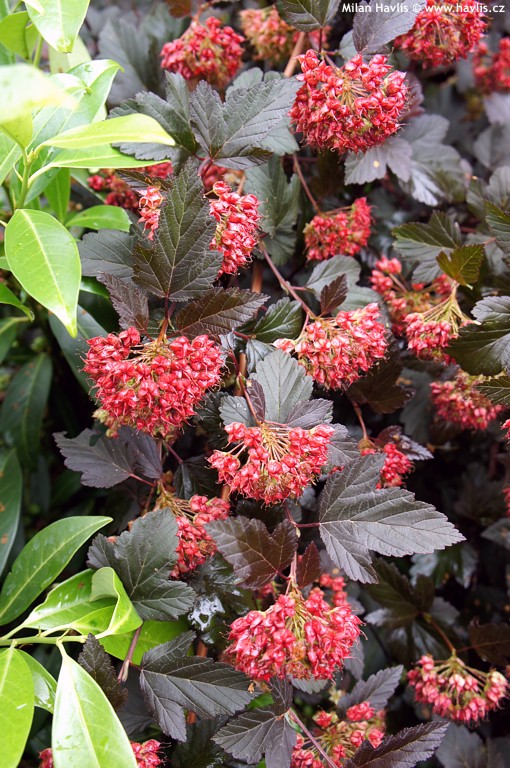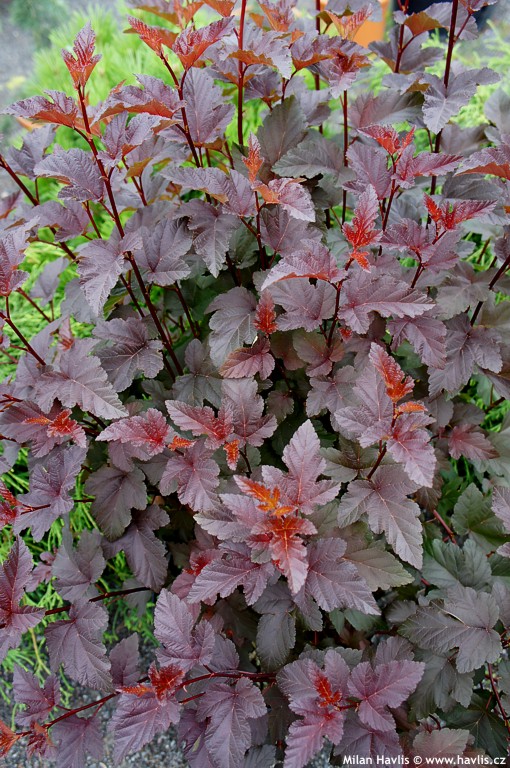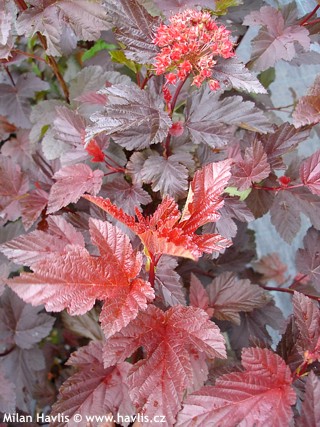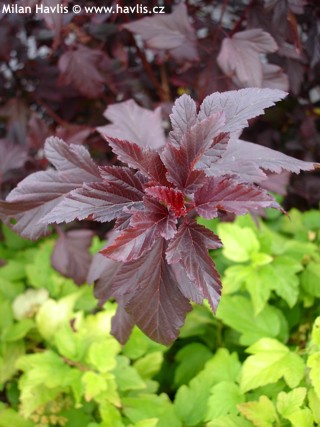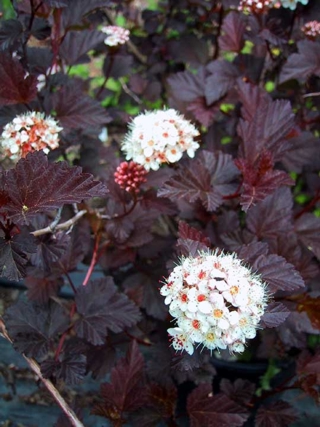Physocarpus opulifolius 'RED BARON' common ninebark
Physocarpus
Ninebark is a low-maintenance deciduous shrub which is available in several varieties offering several leaf colours and shapes. These plants are hardy and tough shrubs that are very popular especially among landscapers because they are relatively cheap, quite attractive, and on top of that they take complete neglect once established.
Red Baron is a non-patented (in 2011) variety of common ninebark with deep burgundy red or almost black-red 3-lobed leaves, which appear early in the spring. They have more tones of red as opposed to their parent variety Diabolo from it was found as a selection and called Red Baron later. Profusion of pinkish white clusters of tiny flowers come out in late May and June, and are followed by carmine red fruit that look like small precious stones, and persist on the shrub until autumn. It grows strictly upright when young, forming a wide V-shape, and bending its older branches later for a somewhat pendent appearance but still remaining reasonably compact compared to Diabolo variety.
Ninebark, thanks to its colour-coded leaves, highlights every border or simply fills a spot where you have so far been hopelessly thinking about putting something less demanding. It is so easy to grow - it takes any soil, pH and location. The root system is so sturdy it can easily grow through heavy clay that will provide nutrients for a fantastic plant. It will look great planted next to bright green conifers or other broadleaved plants with yellow or bright green foliage to provide the best contrast. Location in full sun will secure the deepest leaf colour but is not necessary for healthy growth. Pruning is not a must but an option when you need to rejuvenate the plant. It can be done any time from end February to early summer. Fully hardy to -42°C (USDA zone 3) and can be grown in outdoor containers down to zone 5.
Last update 22-7-2011


































